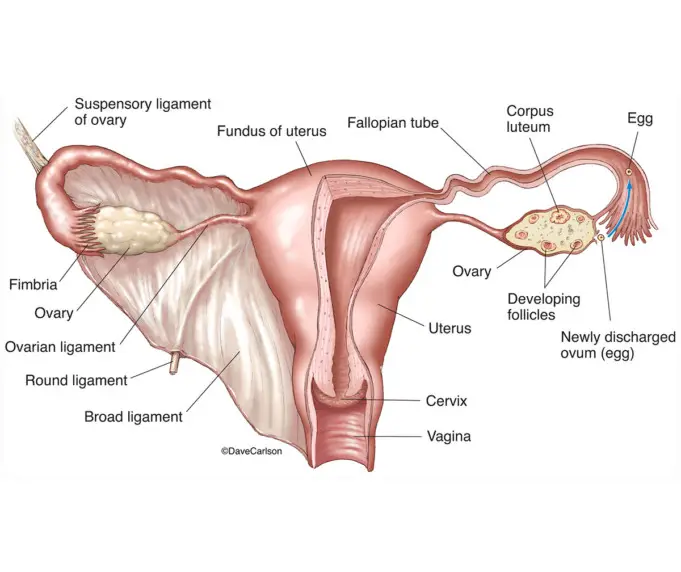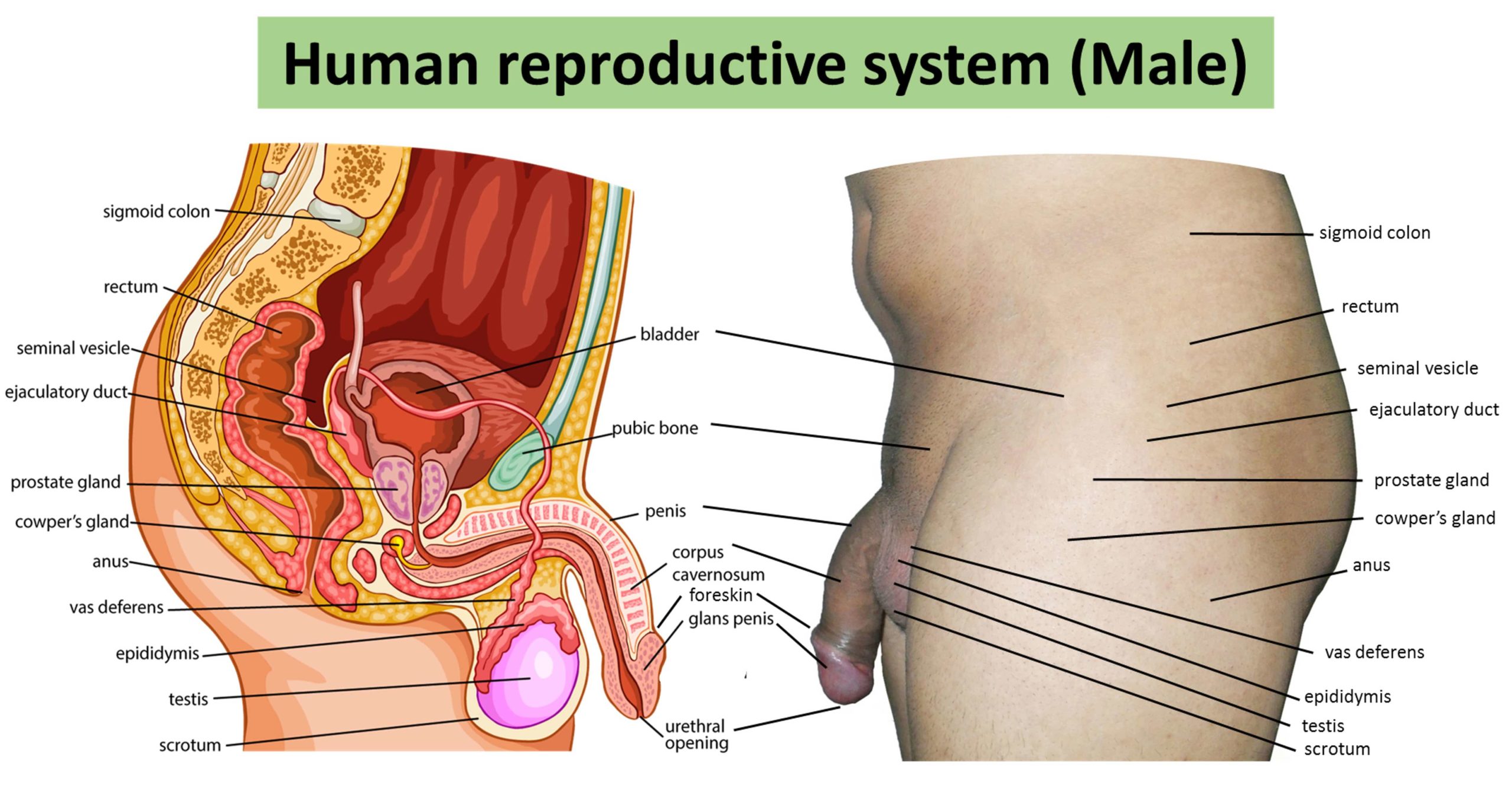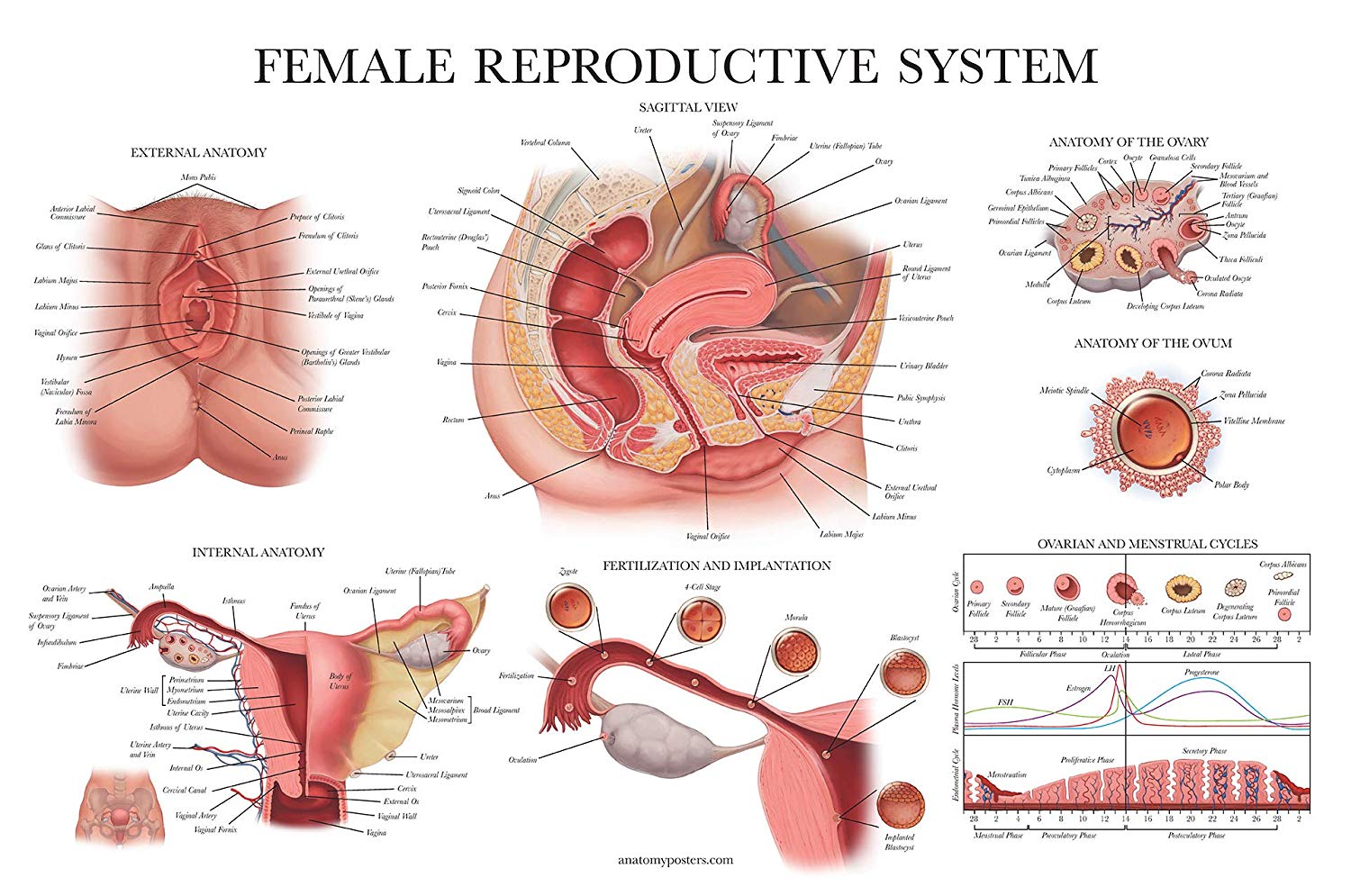The reproductive system is a system of sex organs within an organism which work jointly for sole purpose of sexual reproduction.
Many substances such as pheromones, fluids and hormones are also vital accessories to the process, unlike other organ systems, the different sexes of same species have significantly difference in their reproductive systems. These disparities enable for the combination of genetic information between two individuals.
The system include the external genitalia of both the female and male (vulva and penis) as well as an amount of internal organs, including the gamete-producing primary reproductive organs (testicles and ovaries).
Most other vertebrates have naturally similar reproductive systems consisting of ducts, primary reproductive organs(gonads) and openings. Although, there is a great assortment of physical features and adaptations as well as reproductive methods and behaviour in every group of vertebrates.
The female reproductive system has two functions: to produce and protect egg cells and nourish the fetus until delivery. The male reproductive system has one function: to create and deposit sperm.
Humans have a high level of sexual differentiation. In addition to differences in nearly every reproductive organ, there are numerous differences in the accessory sex characteristics.
Human reproduction involves internal fertilization by copulation. In this process, the male inserts his penis into the female vagina tand ejaculates sperm. A proportion of the sperm moves through the cervix into the uterus, and then into the Fallopian tubes for fertilization, although only one sperm is required to fertilize the ovum.
When fertilization is successful, the fertilized ovum, becomes a zygote, which then travels out of the fallopian tube and into the uterus, where it roots itself to the uterine wall. This marks the start of gestation or pregnancy, which continues till around nine months(which is the full duration) for fetal development.
When the fetus is fully developed, pregnancy is concluded with childbirth, which involves labor. During labor, the muscles of the uterus contract and the cervix dilate over a period of time and the baby comes through the birth canal.
Human infants are helpless and require high levels of parental care as they rely on their caregivers for comfort, sustainability and food which is provided by breast feeding.
Male
The male reproductive system is a group of organs situated around the pelvis region and outside the body of a male that aids the reproduction process.
The primary immediate function of the male reproductive system is to provide the male sperm to enable fertilization of the ovum.
Male genitalia
The reproductive organs of the male can be majorly classified into three categories and they are all male primary sexual characteristics.
The first category produces and stores spermatozoa (sperm), which are produced in the testes, and stored in the temperature-regulating scrotum; while immature sperm travel to the epididymis for growth and storage.
The second category is the ejaculatory fluid producing glands which include the vas deferens, seminal vesicles, prostate including the cowper’s gland (also called bulbo-urethral gland).
The final category are parts used to deposit sperm with a female’s body during coitus and includes; Vas deferens, the penis and urethra.
Major secondary sexual characteristics include: Facial and body hair, A larger, more muscular stature, development of an Adam’s apple, deepened voice, broad shoulders
and a larger, ad muscular stature, deepened voice.
A significant sexual hormone of males is the testosterone and androgen. The testes rsecretes an hormone that controls the growth and production of sperm, and is also responsible for the development of secondary sexual characteristics in men such as deep voice and even facial hair.
Female
The human female reproductive system is an assortment of organs located inside the body and around the pelvic region that aids the reproduction process.
The human female reproductive system comprises of three major parts which are: The ovaries which produce the ova, the vulva, which leads to the vaginal opening to the uterus, the uterus, which carries and protect the fetus.
The breasts are involved during the parenting stage of reproduction, and so can be classified as a part of the female reproductive system although in most classifications they are not considered to be part of the female reproductive system.
Female genitalia
The vagina meets the outside at the vulva, which also includes the labia minora, the libia majora, urethra, mon pubis and clitoris. During copulation this area is lubricated by mucus discharged by the Bartholin’s glands.
The vagina is connected to the uterus through the cervix, while the uterus is connected to the ovaries via the Fallopian tubes.
The ovaries which are a pair, contains hundreds of egg cells or ova; aproximatel redder every 28 days, the pituitary gland releases a hormone that stimulates some of the ova to develop and grow and one ovum is released and it passes via the Fallopian tube into the uterus.
Hormones produced by the ovaries prepare the uterus to receive the ovum, when not fertilized, the walls of the uterus, called the endometrium, and ova are shed the process of menstruation every 28 days but if the ovum is fertilized by sperm cells, it fastens itself to the endometrium and the the fetus begins development.
Reproduction
Gametes are formed in the gonads in a process known as gametogenesis. This occurs when certain types of cells undergo meiosis to change diploid cells( 46 chromosomes) into haploid cells containing only 23 chromosomes.
This process is known as spermatogenesis in males and takes place only after puberty in the seminiferous tubules which is in the testes. The immature sperm are then sent to the epididymis to develop a tail which enables motility.
Each of the original diploid cells or which are also the primary spermatocytes can then begin meosis and divide into two haploid secondary.
The production and survival of sperms require a temperature below the standard body temperature. Since the scrotum, where the testes is present, is positioned outside the body cavity, it provides a temperature of about 3°C which is below normal body temperature.
In females, gametogenesis is known as oogenesis which happens in the ovarian follicles of the ovaries, which can only occur after puberty.
Unlike spermatogenesis each of the original diploid cells or primary oocytes will form one mature ovum, and three polar (a polar body is a small haploid cell that is formed simultaneously as an egg cell during oogenesis, but naturally cannot be fertilized).
Studies, long established that females organisms are born with their lifetime supply of the primary oocytes which is created prior birth and that the final stages of ova production cannot continue until puberty.
However, new scientific studies have challenged this assumption. This new research indicates that in at least some species of mammal, oocytes continue to be replenished in females well after birth and that women who have had chemotherapy treatments can experience growth of new occyte.
Diseases
Like all intricate organ systems, the human reproductive system can be affected by many diseases. There are four major types of reproductive diseases in humans. They are:
- Cancers
- Genetic or congenital abnormalities
- Functional difficulties induced and provoked by physical damage, environmental factors, autoimmune disorders psychological issues etc. The most prominent of all functional problems can include infertility and sexual which are both general terms referring to many disorders with a lot of causes.
- Diseases, which are most times sexually transmitted diseases.
There can be other specific reproductive diseases that can be symptom of other diseases or which can have unknown or even multiple causes which can make them difficult to put in to categories.
Examples are Peyronie’s and endometriosis which occur in male and female respectively. Many congenital conditions cause reproductive abnormalities, but are rather known for their other symptoms.
These include: Cystic Fibrosis, Bloom syndrome, Klinefelter’s syndrome and Turner syndrome.
Function of the reproductive system
- Production of ova and spermatozoa cells
- To convey and maintain cells
- To nurture and take care of developing offspring
- Production of hormones
The above functions are allocated to the primary and secondary, or accessory, reproductive organs. The primary reproductive organs also called the gonads, comprises of the testes and ovaries.
These organs are in charge of producing the gametes, and hormones which function in the development of primary and secondary sexual characteristics in both male and female, maturation of the reproductive system, regulation of the normal physiology, and abd development of sexual characteristics, of the reproductive system.














